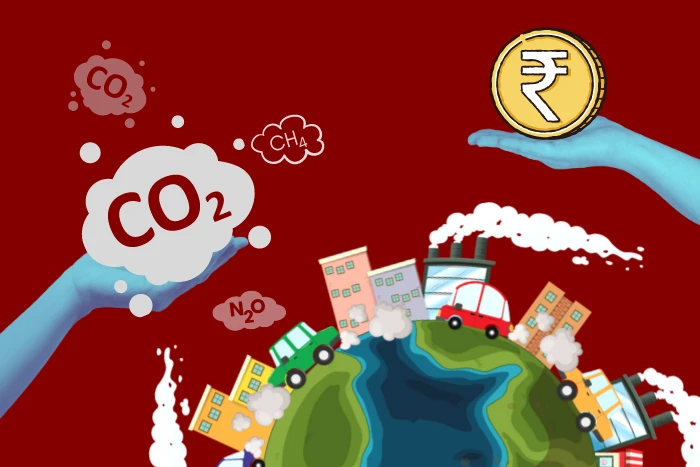
This market operates as a platform where these commodities are exchanged, bought, and sold based on the volume of reduced (emitted or absorbed) greenhouse gases resulting from activities between buyers and sellers.
Tangible Advantages
A well-structured carbon market, underpinned by clear, equitable, and transparent regulations, operates on the carbon pricing mechanism while adhering to the principles of "Amicable Sale" and "The Polluter Pays." Countries and governments stand to benefit by cutting emissions, restructuring economies, and working towards carbon neutrality and eventual net-zero targets.
For enterprises selling quotas or credits, profits ensue, facilitating further restructuring and continued emission reduction efforts. Buyers gain from ensuring compliance with regional and national quota allocation regulations, along with convenience in exporting goods to markets like the EU and the US.
Vietnam has been actively participating in the international carbon market, notably through projects under the Clean Development Mechanism (CDM) since 2005, along with initiatives under the GS and VCS mechanisms. By the end of 2022, around 29.4 million carbon credits from the CDM mechanism and approximately 10 million carbon credits from the GS and VCS mechanisms are projected to be generated.
The allocation of quotas is a crucial aspect in designing the domestic carbon market. Decree 06/ND-CP dated January 7, 2022, emphasizes that the quota allocation method will hinge on "greenhouse gas emission norms per product unit." Emission quotas will be progressively allocated and reduced over time, ensuring the adherence to the Net Zero emission reduction commitments as per the roadmap.
Sustainable Solutions and Global Connectivity
Long-term participation in the carbon market obliges emission-emitting establishments and enterprises to adopt research-based technological solutions to curtail emissions from internal resources. This encompasses energy conservation, technology upgrades, renewable energy adoption, and cleaner production technology shifts. Moreover, exploring avenues for carbon storage and absorption, such as tree planting, is vital. These choices are made following cost-benefit analyses of each enterprise's strategies and measures.
To ensure the efficacy of the domestic carbon market, it should be aligned with global carbon markets through integration and connectivity. This connection would facilitate better management of emission reduction objectives, fostering transparency in transferring, trading, and offsetting emission quotas and carbon credits across nations, regions, organizations, and businesses.
Carbon credits exchanged in the market must adhere to national criteria and meet or exceed reputable carbon standard certification systems worldwide, such as GS and VCS. This environment nurtures conditions for organizations, individuals, and businesses to engage in emission reduction projects and create carbon credits, in line with national and international criteria or carbon standard systems.
Efficient carbon credit exchange operations should enable real-time order matching and transaction results, alongside seamless integration with global carbon trading platforms. The financial influx from the carbon market can be harnessed to steer the economy toward green growth, circularity, and sustainable development.
Understanding the Impacts
To foster foresight, it's crucial to analyze the effects of cross-border carbon tax barriers in developing countries and regions (such as the EU and the US). The forthcoming Carbon Border Adjustment Mechanism (CBAM) from the EU will necessitate importing enterprises to declare emissions for specific sectors and implement CBAM tax collection from 2026, starting October 2023.
Building and operating a domestic carbon market expeditiously can enhance negotiation potential, mitigate carbon tax obligations for exports, and funnel financial resources towards developmental initiatives. Investing in green projects, sustainable growth, domestic emission reduction, and aligning with national and global GHG emission reduction goals will be instrumental in achieving Vietnam's Net Zero target commitment by 2050.
Consider the market price of GHG emission quotas at USD 100/quota, and carbon credits at USD 30/credit. For Enterprise A emitting over 5,000 tCO2e beyond the allocated emission quota, two options arise. First, purchasing 5,000 additional emission quotas at USD 100,000 or via state-regulated quota auctions. Alternatively, acquiring up to 4,000 emission quotas and 1,000 carbon credits from the market, incurring a total cost of USD 70,000.
Conversely, Enterprise B, emitting under 10,000 tCO2e of the free allocation quota, can profit by selling excess emission quotas for USD 200,000 or transferring them for future commitment periods.




















